

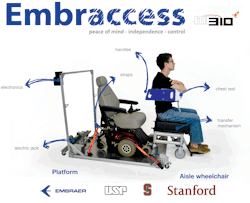
In the winter and spring of 2014 I took ME310, the Stanford ME department’s course on product design and innovation. I had the opportunity to work with a fantastic team of students both at Stanford University and at the University of São Paulo in Brazil.
We were tasked by Embraer, an aircraft manufacturer, to redesign the flying experience for disabled passengers. After focusing on wheelchair users we eventually designed and built a pair of prototypes focused on improving the travel process both for wheelchairs and for wheelchair users.
You can see our brochure here or contact me for our report and presentation.
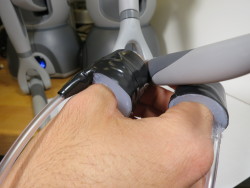
For our final project for ME 327 I worked with Lawrence Kim and Yuhang Che to develop a novel pressure-based finger cuff for relaying cutaneous haptic sensations. We developed the soft finger cuffs, the electronic control system for the pneumatics, and the firmware. We used the Raven-II surgical system as an example application, relaying grip force back to the user.
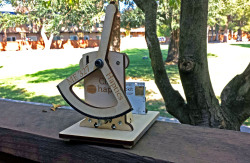
For the first assignment of ME 327, Design and Control of Haptic Systems, we were tasked with building our own unique Hapkit.
This winter, however, I built 10 Hapkits for part of my work as a TA for ENGR 105 (Feedback Control Design). The biggest thing I learned from that process was that I wanted to totally eliminate glue from my own version. The resulting design is held together only by fasteners utilizing t-joints, with rubber standoffs included on the Hapkit’s base.
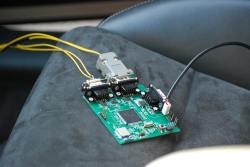
ME218D at Stanford provides student teams with the opportunity to apply their mechatronics knowledge and skills gained from ME218A-C to real problems in industry. My team and I designed and built a system allowing a user to control a car’s windows, doors, and other attributes from a smartphone. The system, sponsored by the Volkeswagen ERL, consists of a PCB with a Bluetooth 4.0 chip, a microcontroller, and CAN controllers, and an Android app.
You can see our full report here:
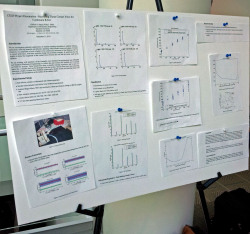
My machine learning project for CS229 employed both classification and regression techniques to determine tissue contact and contact force for a vibrating catheter. We’re planning to extend this work.
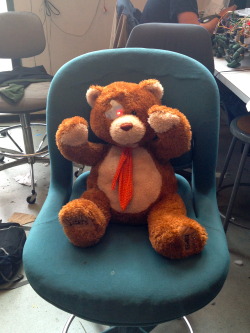
In the spring quarter of Smart Product Design, ME 218c, we were tasked with developing a remote controlled robot and a controller, both of which must be interoperable with the rest of the class’s, in order to rescue miners trapped on a distant planet. My group’s solution was MR. SNUGGLES: Mine Reconnaissance, Survivor Navigation, UnderGround Gentleman’s Live Extraction System.
To find out more about our project, including our teddy bear controller, check out http://mrsnuggles218.wordpress.com/.
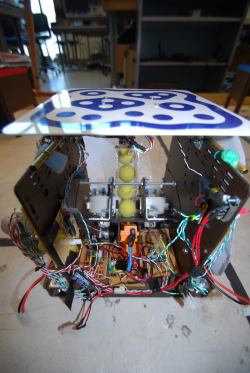
For ME218b, Smart Product Design Applications, our project was to create a robot capable of playing a live-action version of “battleship”.
Check out http://19FAC19furious.wordpress.com to read about my group’s solution and see our robot in action at http://www.youtube.com/watch?v=Mu8y6GNeDQg.

Rather than buy one, I decided to design a Menorah and make it out of acrylic in the Product Realization Lab at Stanford.
Download the files on Thingiverse: http://www.thingiverse.com/thing:39177
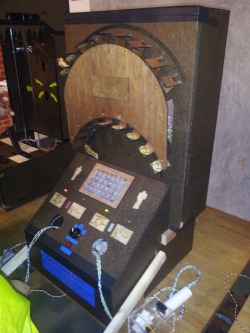
For our ME 218a (Smart Product Design Fundamentals, the fall quarter of Mechatronics) project, which was to make an electro-mechanical Batman-themed two-player game, my group designed and built an election simulator taking place in the board room of Wayne Enterprises, deemed the “Gotham Election Commission.”
Check out http://gothamcityelectioncommission.wordpress.com/ for more info!

For the summer after graduating I worked at MIT Lincoln Laboratory interning in group 101. Working with another intern, I developed a hyperspectral video system.